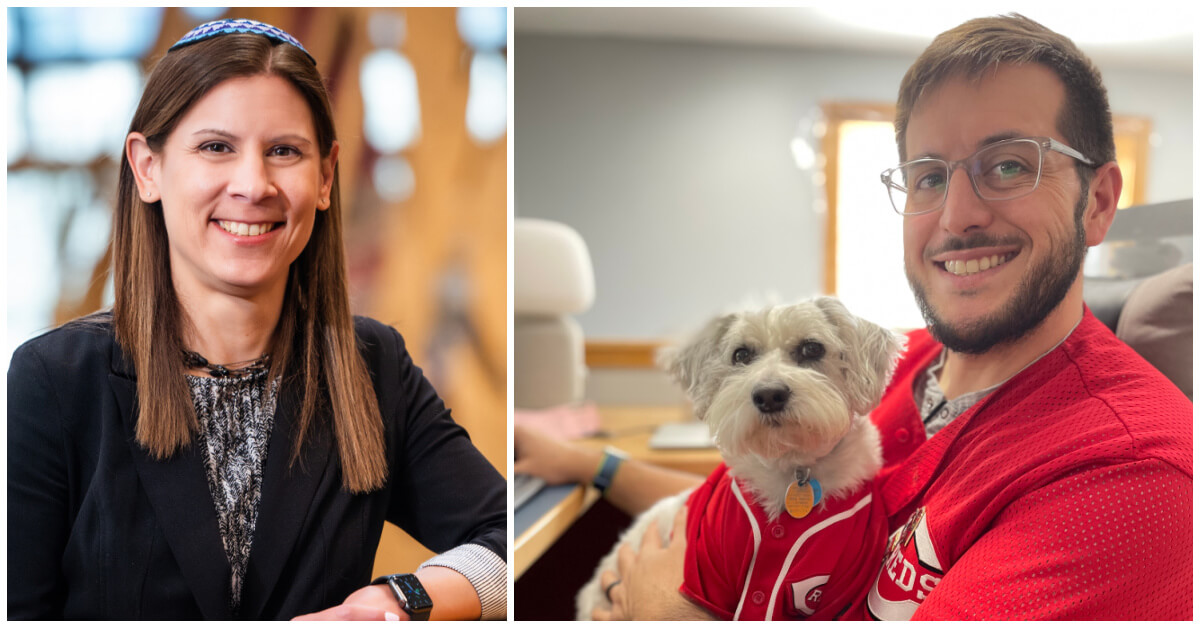The Tribe That Bites

Graphic by Angelie Zaslavsky
I never cared much for vampires. Count Chocula cereal never swam in my bowl. Anne Rice novels eluded me, and I can’t look at blood without needing to lie down. The latest mania for the night creatures initially deterred me even more. But it’s undeniable that vampires are turning up in curious places: a bayou diner (“True Blood”), working-class Stockholm (“Let the Right One In”) and exurban high schools (“Buffy the Vampire Slayer” paved the way for the “Twilight” series).
Even more curious than vampires’ locales, though, is how their mythology gets tangled up with the Jews. When you start telling stories of persecuted groups on the fringes of society, Jews and vampires are both in the room. Now, with vampire domestication so rampant, I wouldn’t be surprised if a vampire turned up to daven next to me. And as long as it is David Boreanaz of “Angel” fame (he’s often shirtless, and would sacrifice eternal life for a Jewish girl — or at least a character played by a Jewish girl), I wouldn’t mind, either. So I’m a little late to the party, but here I am.
Rice may have made a straight trade, from vampires to Jews, in her latest book, but it’s not just contemporary literature that pits those strangers from the East as either one or the other. Some claim that the original myth of the vampire comes from Genesis. A famously hairy and spurned brother struggles with whether to kiss his twin’s neck or to bite it. The parsha reads: “And Esau ran toward him and embraced him, and he fell on his neck and kissed him, and they wept.” Sounds like a surprisingly joyous reunion (Jacob had cheated his brother of his birthright, you will recall), but rabbis point to the dots above the Hebrew word neshikah, “kiss,” which indicate another meaning.
Louis Ginzberg writes, in the book “Legends of the Jews,” “In the vehemence of his rage against Jacob, Esau vowed that he would… bite him dead with his mouth, and suck his blood.” This midrash plays with the closeness of the words neshikah and neshicha — kiss and bite, respectively. About as close as the spellings of Hanukkah and Chanukah, but with distinctly darker overtones of fratricide and vampirism.
Quickly, Jews were transformed from victims of night prowlers to the blood-sucking outsiders themselves. One of the hoariest old axes of antisemitism — the blood libel — is that Jews drink blood, or mix it into their matzo. Erik Butler, a professor of German studies at Emory University who studies vampire psychology, says that historically, vampires were symbolic of any persecuted group, and legends about them grew around whatever images the culture had to present. Hence, subjugated Jews became as good an outsider for vampires to represent as any.
Butler likens Bram Stoker’s characterization of Dracula (the first sympathetic vamp) to du Maurier’s Svengali — a wanderer, a sexual predator, a Jew. Dracula embodied what was then the uncharted East. He was wealthy, debonair, and any ripe-aged woman was a possible conquest. In his forthcoming “Metamorphoses of the Vampire in Literature and Film” (Camden House), Butler traces the vampire’s evolution in popular culture, finding that “the terror that the vampire wields lies in the fact that it moves and changes as fast as modern life.” He claims that a culturally inclusive society with a dovish approach to monsters fosters tolerance and shames xenophobia. Let’s sit cross-legged and sing “Kumbaya” with the Count.
By the 20th century, Jewish stories employed character tropes, but the haunting of dank castles became passé: Vampires are far too symbolically rich to stay cooped up in Transylvania. In Matthew L. Wartell’s “Blood of Our Children” (Web Publishing Company, 1996), the vampire Nosferatu infiltrates an 18th-century Polish ghetto and begins ravaging boys on the eve of their 13th birthdays. Hardly the most sought after bar mitzvah gift, but a remarkable reversal of both the blood libel and the nubile virgins of Count Dracula’s day.
Now, of course, vampires are as often the good guys as the bad. Sarah Jane Stratford charges vampires with stopping the Holocaust in her debut novel, “The Midnight Guardian” (St. Martin’s Press, 2009). Her vampires are both morally responsible and self-interested: They use their considerable powers to thwart genocide while combating hunger, as Hitler’s death camps are killing off all their food. These millennials transform the traditional vampire into a monogamous do-gooder. One called Eamon is even a cross-averse Jew himself, having led a pious life before being bitten. Now he’s too busy hunting Nazis to light Sabbath candles, but he can enter churches, unlike the formerly Christian night creatures.
If vampires are equipped to cripple the Holocaust, surely they can manage the suburbs, where they have descended upon diners and high schools. “Twilight” series writer Stephanie Meyer is a Mormon, but Melissa Rosenberg, who is responsible for the Twilight screenplays, is a Jew. She told Los Angeles’ Jewish Journal that the vampires of “Twilight” are “kosher,” if “kosher” is a synonym for “cool.”
With the current ubiquity of vampires, perhaps they’ve outlived their metaphorical life. No longer the “other,” they now just highlight a chosenness to star in their own fiction. In the 2009 film “Daybreakers,” everyone’s a vampire. The outsiders are human. But can these emblematic outsiders depicting minorities (Irish, women, blacks, Jews) still wear that badge now that they have entered into the mainstream? Maybe not. Maybe we’ll turn to mummies instead.
Contact Allison Gaudet Yarrow at [email protected]
















